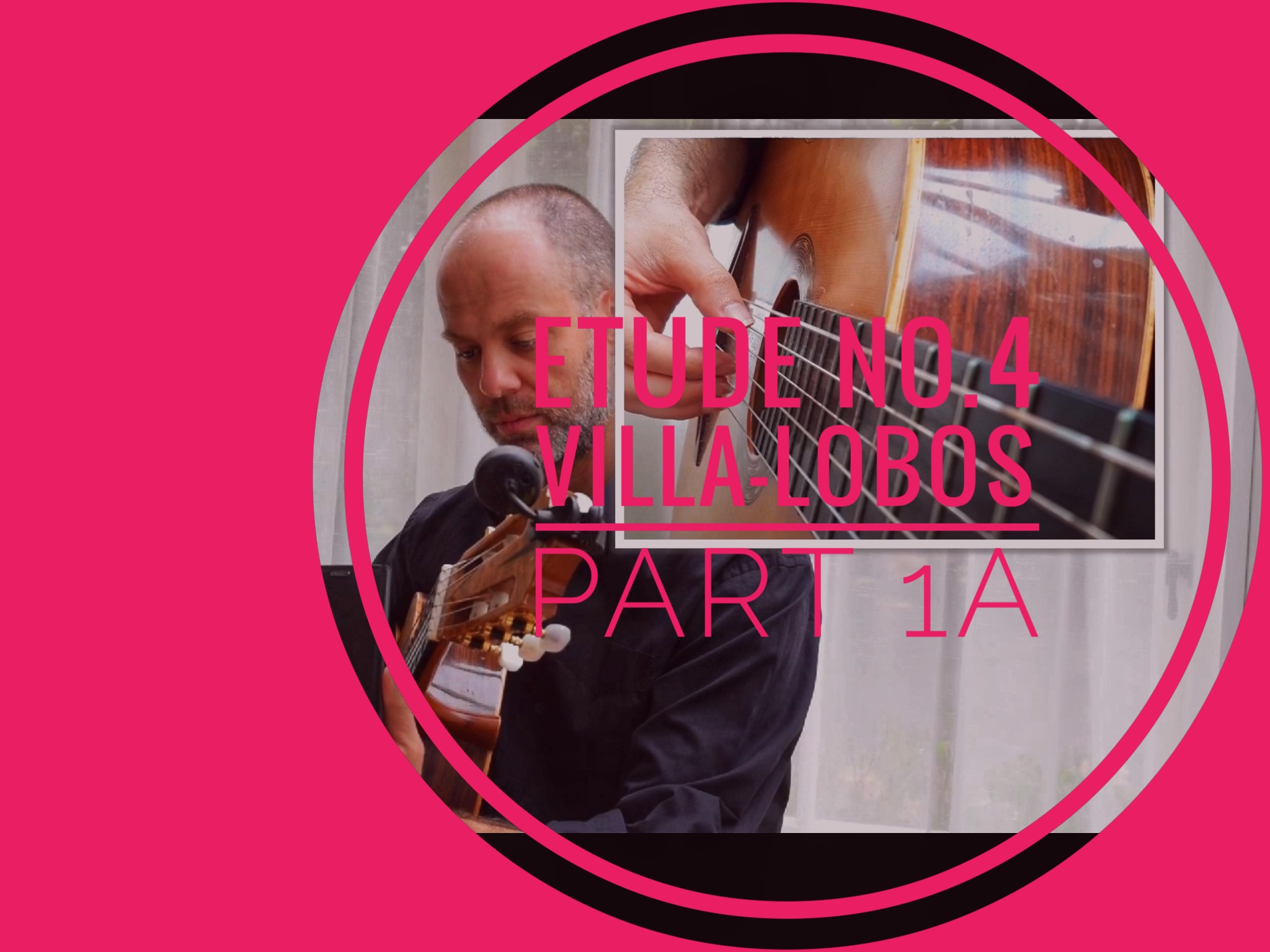
Approaching Etude No. 4 Villa-Lobos
This post deals with how to approach learning the awesome Etude No. 4 by Villa-Lobos. It has a series of videos that will walk you through how to learn and effectively practice this study, with extra lessons on planting and nailing the repeated chords. It is the fourth in the series for the #villalobos12in12 challenge.
Get the Study Guide
The video lesson below correspond to the free guide which you get when joining the challenge. So why not challenge yourself today with etude No. 4.
Fill in your details and get your copies of Etude No. 1 study guide straight to your inbox now – FREE!
#villalobos12in12! what is that?
I bet, like me, you want to play all 12 of Villa-Lobos’ awesome studies? And not just kind of perform them, but actually play and understand them!
Have you found it a little tough to get some of them started, or even finished? Well I have created a unique method for learning these awesome studies. The intro video below explains what it is all about.
If you haven’t got it already, here is the best edition to buy currently for Villa-Lobos’ 12 Etudes.
If you’re wondering why! Check out this detailed post on all the current editions available, and why I have chosen this particle one; or which recording to buy.
Full of detail and long post on editions
Review of the Best Recordings of the Etudes
Short Cut Tip
The short cut tip is as simple as separating your LH & RH. Practice the RH patterns on their own, then practice the LH chord shapes on their own. Then put them together and play the piece.
Basic Technique Lessons
Micro Study 19 – Planting Lesson
Micro Study 24 – RH basics complete
Etude 4 Lesson
Learning Etude 4 & RH Control

The video below walks through learning etude no. 4. The approach taken to this study is the same as no. 1. Hands are separated and you work on basic open string exercises, to learn the patterns, and the LH chord shapes. Check the video out for full details. And again all example are fully tabbed out in the free study guide, get it now in your inbox and follow along.
Learning The First Few Chord Shapes

The video below deals with getting the first section’s chords under your fingers. It leads on from etude no. 3 as it highlights the use of LH guide, anchor and common fingers. These concepts really begin to pay dividends in this study. Check the video out for full details. And again all example are fully tabbed out in the free study guide, get it now in your inbox and follow along.
First Big Event: Min7b5 Part 1

The below video deals with the first big event in this study, and uses micro studies 6 to 8, the min7b5 chord shape. This is a classical Villa-Lobos move, and the first time it arises in the studies: 1 chord moved around the fretboard. Check out the video for full details, all of which correspond to the free study guide.
Effective LH Useage

The video below deals with the next section of this etude, which will require a clear concise approach to LH fingers. Being able to use guide, common and anchor fingers effectively is the goal here. Check out the video below for full details.
The End: min7b5 main event & Coda

The below video details the ending to etude no. 4, the big main event for this study. This is where all the previous practice pays off. There is a lot of shifting here, along with a min7b5 chord shape in the tenor/bass region of the guitar. The main melodies are made clear to help learn this section, along with the RH patterns. Check out the video below for full details.
The end?
Etude No. 5 Next
Next in the series is Etude No. 5 by Villa-Lobos. This study focuses on an ostinato riff, while playing a melody. It is a great piece and will really challenge your overall playing technique for classical guitar.

